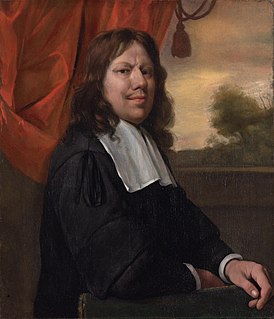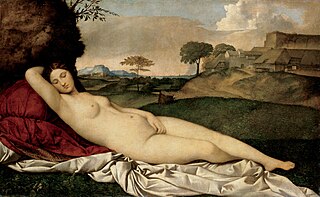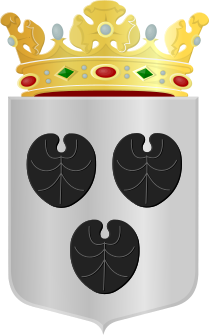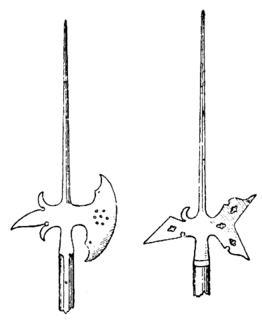
Jan Havickszoon Steen was a Dutch genre painter of the 17th century. His works are known for their psychological insight, sense of humour and abundance of colour.

In art history, "Old Master" refers to any painter of skill who worked in Europe before about 1800, or a painting by such an artist. An "old master print" is an original print made by an artist in the same period. The term "old master drawing" is used in the same way.

Lucas van Leyden, also named either Lucas Hugensz or Lucas Jacobsz, was a Dutch painter and printmaker in engraving and woodcut. Lucas van Leyden was among the first Dutch exponents of genre painting and was a very accomplished engraver.

Jan Gossaert was a French-speaking painter from the Low Countries also known as Jan Mabuse or Jennyn van Hennegouwe (Hainaut), as he called himself when he matriculated in the Guild of Saint Luke, at Antwerp, in 1503. He was one of the first painters of Dutch and Flemish Renaissance painting to visit Italy and Rome, which he did in 1508–09, and a leader of the style known as Romanism, which brought elements of Italian Renaissance painting to the north, sometimes with a rather awkward effect. He achieved fame across at least northern Europe, and painted religious subjects, including large altarpieces, but also portraits and mythological subjects, including some nudity.

Dark Blue is a 2002 film directed by Ron Shelton and starring Kurt Russell with Ving Rhames and Brendan Gleeson in supporting roles. The film is based on a story written for film by crime novelist James Ellroy and takes place during the days leading up to the Rodney King trial verdict.

Rembrandt Harmenszoon van Rijn was a Dutch draughtsman, painter and printmaker. An innovative and prolific master in three media, he is generally considered one of the greatest visual artists in the history of art and the most important in Dutch art history. Unlike most Dutch masters of the 17th century, Rembrandt's works depict a wide range of style and subject matter, from portraits and self-portraits to landscapes, genre scenes, allegorical and historical scenes, biblical and mythological themes as well as animal studies. His contributions to art came in a period of great wealth and cultural achievement that historians call the Dutch Golden Age, when Dutch art, although in many ways antithetical to the Baroque style that dominated Europe, was extremely prolific and innovative, and gave rise to important new genres. Like many artists of the Dutch Golden Age, such as Jan Vermeer of Delft, Rembrandt was also an avid art collector and dealer.

Cornelis de Wael was a Flemish painter, engraver and merchant who was primarily active in Genoa in Italy. He is known for his genre paintings, battle scenes and history paintings. Through his art work, support for Flemish painters working in Italy and role as an art dealer, he played an important role in the artistic exchange between Italy and Flanders in the first half of the 17th century.

Lucas van Valckenborch or Lucas van Valckenborch the Elder was a Flemish painter, mainly known for his landscapes. He also made contributions to portrait painting, and allegorical and market scenes. Court painter to Archduke Matthias, the governor of the Spanish Netherlands in Brussels, he later migrated to Austria and then Germany where he joined members of his extended family of artists who had moved there for religious reasons.
Willem Danielsz. van Tetrode, known in Italy as Guglielmo Fiammingo, was a sixteenth-century sculptor of Dutch origin who served as a pupil of Benvenuto Cellini in Florence. On his return to Delft in the Netherlands in 1567-68, it has been suggested that he may have trained the young Adriaen de Vries and encouraged him to go to Florence.

Lucas Franchoys the Younger or Lucas Franchoys II was a Flemish Baroque painter from Mechelen, who painted numerous altarpieces and portraits in a style reminiscent of Anthony van Dyck.

Paulus Moreelse was a Dutch painter, mainly of portraits.

Sjoerd Hendrik de Roos, better known as S.H. de Roos, was a Dutch type designer, book cover designer and artist.

Tetrode, also given as van Tetrode and spelled variously as Tetterode, Tetteroo, Tettero, Thetrode and Tetroe, was a Dutch medieval noble family which later became a prominent patrician family in Holland. The most famous member of this family was the 16th-Century sculptor Willem Danielsz van Tetrode, who hailed from Delft. The coat of arms of the Tetrode family, showing three leaves of the yellow water-lily, is now used as the municipal coat of arms of Bloemendaal.

Peter, Peeter or Pieter Franchoys or Francois was a Flemish Baroque painter, who is mainly known for his portraits and religious paintings.
Reinier Boitet, was a Dutch publisher and writer who updated Dirk van Bleiswijk's History of Delft in 1729.

The Officers of the St Adrian Militia Company in 1633 refers to the second schutterstuk painted by Frans Hals for the Cluveniers, St. Adrian, or St. Hadrian civic guard of Haarlem, and today is considered one of the main attractions of the Frans Hals Museum there.

Pieter de Jong, was a Dutch Golden Age member of the Haarlem schutterij.

Johan Damius, was a Dutch Golden Age member of the Haarlem schutterij.

The Portrait of an African Man also known as Portrait of a Moor is a painting by the Netherlandish Renaissance painter Jan Mostaert. Mostaert probably made the painting between c. 1525 and 1530, or slightly earlier. The exact subject of the painting has long been unclear, although numerous ideas have been put forward, including that the depicted figure is a soldier, a nobleman or Saint Maurice. The portrait is significant in that it may portray the earliest portrait of a specific black man in European painting, though Saint Maurice, and Balthazar of the Three Kings or Biblical Magi, had long been usually portrayed as black.






















